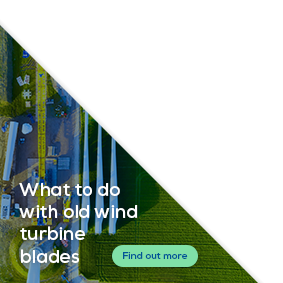News
How 5 EU countries are fast-tracking onshore wind to boost their energy independence
4 April 2025
Germany, Poland and the Baltic States have suffered big economic damage from rising fossil fuel prices. They are now rushing to reduce their dependence on fossil imports. They see wind as the key solution here. Thanks to recent policy changes, they are now starting to add large wind capacities, making their economies more energy independent and competitive.
Europe has almost 250 GW of onshore wind capacity. Last year 89% of new wind energy capacity built in Europe was onshore. And land-based wind turbines will continue to be the bulk of new installations. WindEurope expects 75% of all turbines built in the EU between now and 2030 to be onshore, bringing EU onshore wind capacity to 304 GW by then.
We observe especially positive signals for onshore wind in Germany, Poland and the Baltic States Lithuania, Latvia and Estonia – 5 countries that had been particularly impacted by the energy crisis.
Germany
Last year Germany added more than 4 GW of new wind energy capacity, more than double that of any other EU country. They’ll build even more in the next years. We expect Germany to add around 8 GW annually on average between 2025 and 2030.
Crucial policy changes made this possible. Overriding Public Interest has made a big change. Projects that used to end up in court get the green light much quicker now. This and other key permitting improvements allowed Germany to permit 15 GW of new onshore wind in 2024. That’s 7 times more than 5 years ago. The German February auction round alone – the first of four auction rounds for onshore wind in 2025 – awarded more than 4 GW of new wind. Sufficient new permits led to a healthy oversubscription.
And they’ve also decided to spend more on infrastructure. The new Government wants to spend €500bn on infrastructure projects such as grids, roads and bridges. Infrastructure constraints are a key bottleneck for Germany’s wind expansion. €100bn will go into a climate fund, investing in the electrification of industry and transport.
Poland
Earlier this year Poland kicked off its commercial-scale offshore wind deployment by completing the two offshore substations for the 1.2 GW Baltic Power wind farm. But things are also improving for offshore wind. The Polish Government has proposed a new law that will reduce the minimum distance of onshore turbines to residential areas to 500 metres – down from the current 1.5 km depending on turbine height. This will significantly expand the area where turbines can be built. The proposal also seeks to speed up permitting, especially for repowering projects.
The Baltic States
And the Baltic States are also stepping up wind expansion. The share of wind in their electricity has gone up from 15% to 28% over the last 3 years alone. We expect the Baltics to reach a total wind capacity of 10.5 GW by 2030, up from 2.5 GW today.
Estonia has extended the available area for wind development from 10% of the country to over 60%. It has already installed new radars which minimise distortions from wind farms. Latvia has fast-tracked environmental permits and plans projects in its state-owned forests. Lithuania is exploring ways of linking new wind farms to the electrification of industry to help drive investments in the latter. The Baltic States are building out their grids too, with more interconnectors between themselves and their neighbours around the Baltic Sea.
This is paying off. For example, just last Friday project developer Vindr announced it will invest up to €600m to build more than 600 MW of onshore wind in Latvia.
More wind energy means less energy insecurity
The 5 countries have one thing in common. All of them have been hit badly by the explosion of Nord Stream 2 and the Russian energy blackmailing. Surging gas prices have driven up the price of electricity. This resulted in high inflation and continues undermine the industrial competitiveness of these countries.
All 5 countries are now rushing to reduce their dependence on fossil imports. They see wind as the key solution here. Other countries should follow their example.
The EU spent around €400bn on energy imports last year, mostly on fossil fuels. We can boost energy security and European competitiveness with wind. Today Europe’s wind fleet avoids 100 billion cubic metres (bcm) of fossil imports annually. It will be 200 bcm by 2030 if targets are met. That equals the capacity of 1,000 large oil tankers.

